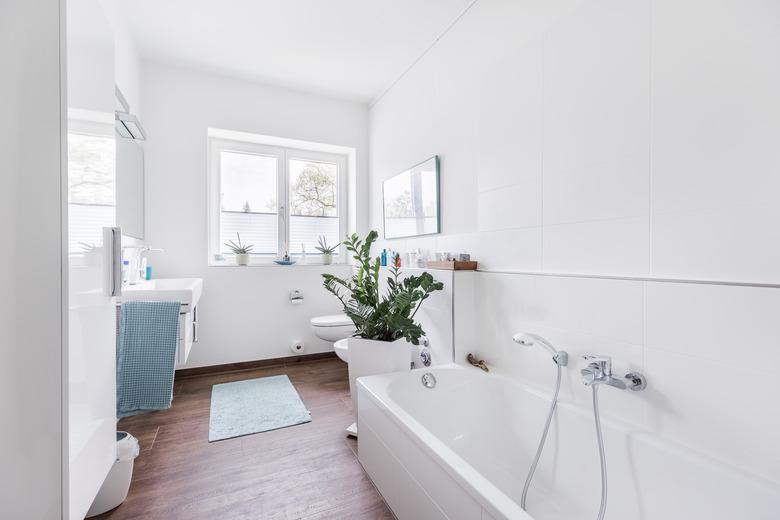How To Repair Cracks In A Tub Surround
Tub surrounds made of fiberglass or acrylic are among the least expensive and easiest to install. While a master bathroom may not be the best place for one, they're common in main and second bathrooms in many homes. Because plastic is a flexible material, it can crack. Fortunately, cracks are a snap to repair as long as you have the right materials. If you purchase one of the many fiberglass bathtub repair kits on the market, you'll have everything you need except for a sander.
Stop the Crack From Spreading
Before you fill a crack in your fiberglass or acrylic tub surround, it's important to stop it from spreading. The way to do this is to drill a 1/4-inch hole on either side of the crack. These holes are known as "stop-drill" holes, according to bathroom fixture supplier Badeloft.
If the crack has separated to the point that one side has sunken below the level of the other one, the stop-drill holes can be used to spray reinforcing polyurethane foam behind the crack. You'll probably want to drill one or two more holes closer to the middle of the crack, especially if it's a long one. The foam cures and hardens quickly to provide a solid backing, which makes the repair easier.
How to Reinforce a Crack
You can use any type of expanding polyurethane foam to reinforce a bathtub surround that has cracked. One of the most common is Great Stuff, which is normally used to insulate gaps in walls and floors. Once you've drilled the stop-drill holes, simply insert the tube that comes with the foam container into the hole and hold the trigger until the foam begins to back out.
Stop spraying immediately because you don't want to overdo it, and wait until the foam sets before trying to remove any excess that gets on the tub surround. The foam is extremely sticky, and trying to wipe it off will just make a mess. After the foam has hardened, cut it flush with the tub surround surface using a utility knife and dig a small indentation in each hole to make room for the repair compound. Scrape hardened foam from the tub surround using the knife.
Repair the Crack With Epoxy
To make space for the repair compound, Home Advisor recommends grinding a bevel on both sides using a rotary tool and a grinding wheel accessory. If the crack has split and the two sides are at different levels, you'll also need to use fiberglass mesh, which you can purchase separately if the kit you have doesn't include any.
Mix enough epoxy with hardener to cover the crack and spread it with a plastic putty knife. If you're using fiberglass mesh, lay it directly on the fresh epoxy and smooth the epoxy with the putty knife. Scrape as much excess from the repair as possible to make sanding easier. When the epoxy sets, sand it with a progression of sandpaper, starting with 80- or 100-grit and working up to 400- or 600-grit, depending on the desired quality of the repair.
After the epoxy has set and you've sanded it, the sheen of the repair probably won't match the rest of the surround. Remedy this by rubbing in some car wax or use a product designed specifically for fiberglass, such as Gel-Gloss RV Polish.
